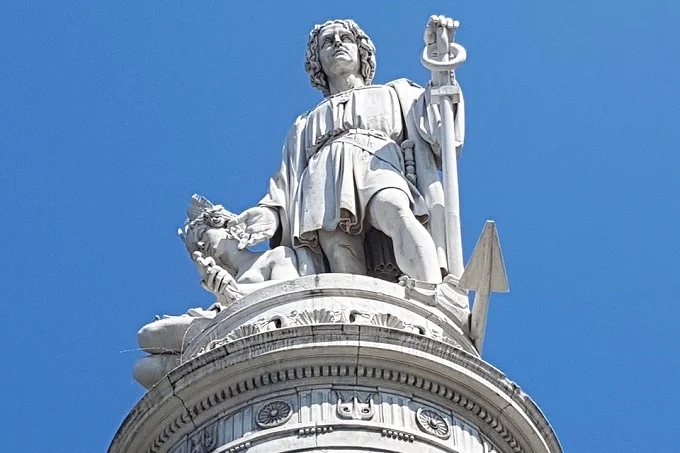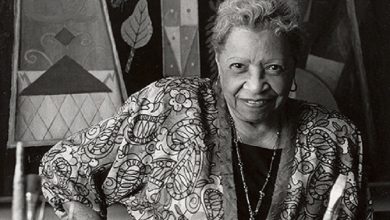Fake artifacts and fictional history of America: Christopher Columbus vs Vikings

Columbus’s role in American history is indeed great. For a long time, they have been trying to cross out with all their might and means, trying to prove that the Vikings were the first to arrive here, not the Spaniards.
A year ago, the tragic events in the United States led to a series of vandals against monuments to the famous explorer. It is not without reason that he is considered the culprit of the genocide of indigenous peoples. In their desire to erase this person from the history of their country, the Americans even went for forging artifacts. In the meantime, the truth about who actually discovered America surprised everyone in the end.
Vinland Map

In 1965, Yale University bought an ancient map. The Vinland Map was unveiled with unprecedented fanfare. Of course, this discovery turned the entire history of America upside down, and this document dates from the middle of the 15th century. The map depicted part of the coast of North America. According to this, it became clear that the continent was not discovered at all by the Spaniard Columbus but by the Scandinavian Vikings. All this actually looked too good to be true even then.
This idea was not new at all. In the Icelandic epic, two whole sagas tell about the Viking expeditions to North America. According to these texts, they even built several settlements there, traded, and fought with the locals. This was confirmed by archaeological finds made on the Canadian island of Newfoundland back in the 60s of the last century. But this new artifact suggested something more. It turns out that these lands were known in Europe before Columbus!
The discovery of the continent has long been the cause of violent conflicts between Catholics and Protestants in America. Even the Europeans in this matter were divided into two warring parties. The northerners believe that it was their pagan ancestors, the Vikings, who discovered these lands. Southerners did their best to elevate the role of Columbus and the Spanish monarchy. The emergence of such evidence of the pre-Columbian era as the Vinland map greatly strengthened the position of the former.
Blatant fake
As it turned out, the map was really too good to be real. Just a couple of months after the publication, scientists have found flagrant inconsistencies with other sources from the Middle Ages. In addition, the mysterious discovery of such an important artifact in the past five centuries raised a number of questions.
Already in the 70s of the 20th century, experts actively pointed out obvious problems with the dating of the map. More precise research could not be done, and some fierce opponents claimed that such a valuable document could be damaged in this way.
The controversy lasted for decades. Relatively recently, all the necessary research has been done, which finally fully proved that the artifact is a fake. Experts performed a series of analyzes of the ink used to draw the map. Surveys have determined that the age of the “fake” is the 20s of the last century. Modern realities have made it possible to use a very precise method called X-ray fluorescence spectroscopy.
The analysis carried out put a fat point in this controversial issue. Titanium was found in ink. This substance began to be used only in the 1920s. The scan also showed some kind of inscription on the back of the parchment. It has been deliberately altered by someone to make the document look authentic.
This became further convincing evidence that the card was tampered with. In addition, the fake was of very high quality and was made on purpose, with the aim of misleading the scientific world. The researchers have one question left in this regard: who could dare to do such a thing?
Vikings nostalgia
In medieval texts, Vikings refer to the American region as Vinland. The mentions of this contain both Scandinavian and ancient Greek and ancient Roman records. The storytelling is truly impressive. There are ancient magical rituals, blood feuds between clans, epic battles with Native Americans, and turbulent trade. The theme has been endlessly exploited in fiction, films, anime, and even video games.
At the beginning of the 20th century, there was already a similar wave of nostalgia for the harsh Norse warriors. Perhaps this inspired the forger to create a fake medieval map. Experts say the motivation could have been both financial and political. The map was first offered to the British Museum by an antique dealer in 1957. Experts then treated the artifact with fair suspicion and refused to buy it.
After that, the document was purchased by the American dealer Lawrence C. Witten III. He paid very dearly for it in those days, and the map was proposed to Yale University. They refused to buy because of the fabulous price. One wealthy university graduate bought the artifact and donated it to the University of Connecticut.
The chain of events raised a lot of questions even then. Witten was hiding from whom he bought the card. Now that everyone knows that this is a fake, it becomes clear why. The merchant Ferracholi de Ri, who sold the document to the rich man, was soon convicted of theft and forgery of manuscripts. Consequently, the origin of this card became highly suspicious. It all came to light in the late 1980s.
At the same time, when the curators of Yale University bought the artifact, they tried to determine whether it was authentic. When they dated it to the 1440s, they based primarily on the writing style and age of the parchment on which the map was depicted.
Another “discovery”
If the truth had become known then, it would have fit into the great cultural movement that swept America in the 1920s. After all, quite recently, another fantastic discovery was made. Swedish immigrant Olaf Oman discovered a runic stone in Minnesota. This artifact served as proof that the Vikings landed on the coast of America and went inland. There they built their villages.

The scientific world immediately reacted to this discovery very skeptically. Despite clear evidence that this is another fake, experts have been arguing for decades. Experts in the field of medieval history have written entire treatises that nationalists are trying to rewrite American history. The Vikings have become a good lead for the creation of new racial and political myths.
In the north of the continent, followers of Columbus’s opponents, grieving with anti-Catholic and anti-Spanish sentiments, began to erect monuments to the Vikings. Against this background, it does not seem at all a coincidence that Yale University published a map of Vinland the day before Columbus Day in 1965.
Is North America no longer for whites?
Of course, both the Kensington Runestone and the Vinland map are blatant forgeries. But, as you know, there is no smoke without fire. So it is in this case. All the nostalgic tales of the ubiquitous Vikings and fake evidence have grown around the core of historical truth.
According to all available modern data, it is known that the inhabitants of early medieval Scandinavia (who are now called Vikings) were avid travelers. Already in the 9-10th centuries, they made daring raids on the coasts of France and England. At about the same time, they moved along the Volga to the south of modern Russia. There they managed to trade and fight in Baghdad with the Abbasid Caliphate.
Thus, the restless nomads reached the shores of America. On the island of Newfoundland, which belongs to Canada, ancient Viking settlement remains have been discovered. For a long time, scientists could not determine its exact age. Most of the conclusions were based on artifacts that turned out to be fake and several Icelandic sagas and oral traditions that could not be taken seriously.
Recently, scientists, in addition to radiocarbon analysis, conducted a number of studies. It was possible to find out the exact date when the trees were cut down, from which houses were built in the Viking settlement in the Newfoundland Viking settlement of L’Anse aux Meadows. This became the proof that ended all controversy. In 992, exactly 471 years before Columbus, the Vikings arrived in America. The settlement is today the only one known in North America as belonging to the Vikings. It is a UNESCO World Heritage Site. It’s not very big. There are only three residential buildings, a smithy, several workshops for repairing ships.

The Vikings did not stay in North America for long. Their movements were limited only to Nova Scotia and some nearby regions. According to the sagas, the Norwegians have successfully traded with the locals for some time. Then they were destroyed by internal strife and unsuccessful wars with indigenous peoples.
In one saga, a female warrior named Freydis (sister of the famous Leif Eriksson) takes part in a battle against Native Americans. She comes out bare-chested and slams her sword at her, trying to intimidate her enemies. Then she kills several of her brothers with an ax. After that, a handful of surviving colonists are sent back to Greenland.
Of course, these medieval tales were not the inspiration for the blatant forgeries. They were only polished in accordance with the political and cultural demands of the early 20th century. It’s just that the Americans were so desperate to minimize the role of the Spaniards, Italians, and indigenous peoples that they even went for falsifications.
The funny thing is that they found what they were looking for so desperately and unsuccessfully, not at all where they expected. The story does not need to be made up, it is already full of breathtaking surprises.




